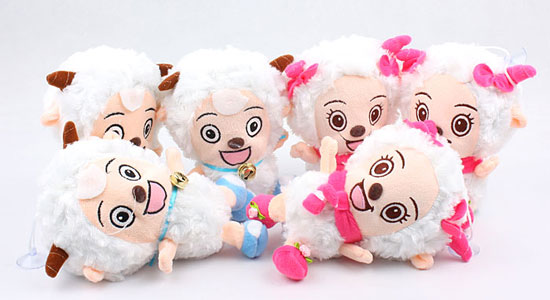Cartoon makers between rock and a hard place
- By Li Xiao
 0 Comment(s)
0 Comment(s) Print
Print E-mail
China.org.cn, November 30, 2011
E-mail
China.org.cn, November 30, 2011
China's animation industry entered its most productive days since the government issued a directive in September 2006 to ban imported cartoons from domestic TV channels during prime time.
|
|
| China's animation industry entered its most productive days since the government limited foreign cartoons in 2006. |
Increasing demand and government support have led to the birth of a good many animation studios and attracted hundreds of thousands of college graduates with related degrees. In 2010, 220,000 minutes of cartoons were produced, making China the world's biggest producer of cartoons on TV. On the other hand, great quantity did not translate to high quality. Not a single domestically produced cartoon was ever very well received by the general public, with copycat scandals constantly haunting the industry.
The easiest blame falls on the studios. Still, the creators of the cartoons are only one ring on the abnormally developed industry chain, sandwiched between the government, TV channels and toy manufacturers.
Government: The blind pursuit of quantity
Despite the tremendous output, many considered most of the domestically produced cartoons made in 2010 to have low quality, poor content and vulgar taste. A good number of shoddy products were subsidized by the government for the minutes of original cartoons the studios produced.
On average, an original cartoon series can receive 2,000 yuan (US$314) of subsidy for every minute put on CCTV, with the sum of the series earning as high as 3.5 million yuan. This means most of the flash cartoons and low-cost 3D animations can make ends meet or even make a small profit from only the subsidies. The government also provides other supports for animation companies including land leases and reduction or exemption of rent and tax payment. All these policies result in a disastrous number of low-cost, poor-quality cartoons and an increasingly fierce competition for TV channel resources.
Toy manufacturers: From importation to imitation
Most domestic cartoons on TV were produced in the shadow of toy manufacturers, said an industry insider.
|
|
| Most domestic cartoons on TV were produced in the shadow of toy manufacturers. |
In July 2011, a domestic cartoon series "High-speed Rail Man" released a six-minute trailer online and triggered severe public criticism from audiences. The cartoon, made by Shenyang Feifan Creative, which came in fourth on the 2010 Top 10 Chinese Original Animation Producers List published by the State Administration of Radio Film and Television (SARFT), was accused of copying a Japanese cartoon "Hikarian" produced in 1998.
According to the insider, the sponsor of the alleged copycat was one of the toy companies who had imported "Hikarian" to China years ago. When "Hikarian" became popular among Chinese children, toy manufactures from Guangdong Province began producing toys in massive quantities derived from characters of this Japanese cartoon. It was said that those toys brought in 350 million yuan of net profit in three years.
Toy manufacturers have played an important role in Chinese animation industry since the 1990s. They imported foreign cartoons, had them translated and released on domestic TV channels (sometimes for free). Then they produced toys and stickers inspired by those cartoons, earning high profits.
Animation planner Yang Yingge told China Newsweek that up to 99 percent of cartoons showing on Chinese local TV channels during that period were foreign cartoons, more than 90 percent of which were imported by toy manufacturers.
Since China limited foreign cartoons in 2006, toy producers turn their attention to home-grown cartoons. They begin to sponsor or cooperate with domestic animation studios to create original cartoons and put the cartoons on TV used as advertisements for their new toy products. The sponsor of the alleged copycat "High-speed Rail Man" was just one of many.
To reduce the cost, toy producers prefer adjusting and reusing the old moulds of imported cartoon characters instead of making new ones which could cost millions of yuan. This is one of the reasons why so many home-grown cartoons resemble Japanese or American ones, China Newsweek commented.
Animation studios: Caught in between
Since 2009, Chinese animation market has been flooded with domestically produced cartoons with similar themes and designs which caused aesthetic fatigue among consumers. Most cartoons, sponsored by toy producers, were poor in quality because the sponsors lacked enthusiasm for creativity and cared nothing but lowering costs.
Domestic animation companies, which used to provide processing services to Japanese or American cartoons, lack both foundation and experience for original cartoon production. There had been a few valiant efforts since 1990, including an adaptation of China's classic "The Butterfly Lovers" in 2003, but all failed in both ratings and critical responses.
Also, an explosive growth of domestic cartoon production heats up the competition for TV channel resources among studios. Broadcasting fees doubled every year from 2008 to 2010, which becomes another difficulty that domestic animation studios have to face.








Go to Forum >>0 Comment(s)